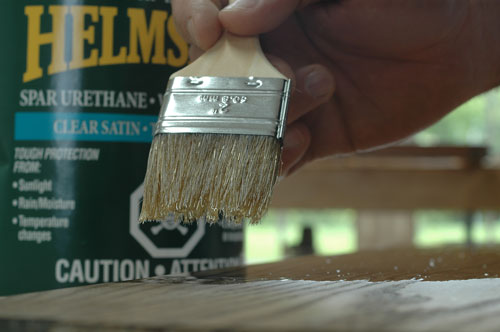 Slowly but surely, the people who regulate our world are re-evaluating ideas about environmental safety. Closer examination and more detailed scientific analysis shows that health authorities were sometimes mistaken about the safety of everyday substances they once thought were harmless. Ultimately these realizations lead to changes, not all of which are immediately obvious. Wood finishes are a perfect example. The entire industry is evolving right now, and it’s affecting the wood finishing options and techniques available to each of us on retail store shelves.
Slowly but surely, the people who regulate our world are re-evaluating ideas about environmental safety. Closer examination and more detailed scientific analysis shows that health authorities were sometimes mistaken about the safety of everyday substances they once thought were harmless. Ultimately these realizations lead to changes, not all of which are immediately obvious. Wood finishes are a perfect example. The entire industry is evolving right now, and it’s affecting the wood finishing options and techniques available to each of us on retail store shelves.
The main issue in all this is a large and varied group of substances called volatile organic compounds (VOCs). These are the solvents and drying agents found in many traditional urethanes, varnishes, stains and paints, and Canada is almost six months into a two-year long phase-out period for some solvent-based wood finishes. Specific existing products have been completely reformulated, while older brands are now manufactured only in smaller container sizes. As older products and packaging is sold, it’ll be replaced only with the new stuff.
The Slow, Subtle Threat of VOCs
Finish-related VOCs are not the kind of things that always cause harm in immediate and obvious ways. If they were they never would have been approved in the first place. No, the VOC threat is more insidious than that, so don’t be too hard on the people behind the new regulations. Even if you’ve been using a soon-to-be phased out product for years  with no apparent health problems, it doesn’t mean that the decision makers have rocks in their head. Substantial health effects aren’t always obvious, and the main concern about them isn’t always direct human health. Relatively small concentrations of VOCs, for example, trigger negative chemical reactions in the atmosphere.
with no apparent health problems, it doesn’t mean that the decision makers have rocks in their head. Substantial health effects aren’t always obvious, and the main concern about them isn’t always direct human health. Relatively small concentrations of VOCs, for example, trigger negative chemical reactions in the atmosphere.
As a concession to consumers, government regulators are allowing traditional solvent-based formulations to remain on store shelves indefinitely in cans that are 1 litre and smaller in size. Quantities like these are more likely to be used for smaller projects that don’t pose the same threat, or so the thinking goes. However, whether you think it’s reasonable or not, the main thrust of these changes is a move towards more water-based finish chemistry, especially for products sold in one gallon containers. This is unfolding right now, so it’s a reality we all need to get used to.
Safer Solution 1: Water-Base Urethane
The world has had water-based urethane since the 1980s, and though they do a great job and offer exceptional safety and low odour, it’s not always easy to get good results with them. The problem is usually ultra-fast drying times that make it more challenging to create smooth surfaces. You’re more likely to find that brush strokes and air bubbles dry before flowing out unless you take specific precautions. The trick to achieving smooth, attractive wood finishes with water based stains and urethanes depends on a series of steps that work together. To see how I get the most from water based products in my own shop, check out my video tutorial.
Safer Solution 2: Water-Based Oil-Modified Urethane
There’s also a brand new side to the changes brought on by VOC regulations, and it might just mean easier wood finishing results. As a replacement for the phased out solvent-based products in one gallon cans, some manufacturers have developed something brand new. Dubbed water-based, oil-modified urethanes, these products have substantially longer drying times. And while this might slow down your finishing progress a little, I consider slower drying times good news. It should make these finishes more forgiving and easier to succeed with. Slower drying typically allow more time for a finish to flow out and form a smooth surface film, especially when applied with a brush or foam pad. I’ll keep you posted on my findings later this year as I test these new oil-modified products. Price is one thing I can tell you about right now. Many of the new VOC-compliant finishes will cost roughly 20% more than the products they replace. They can also be applied over existing finishes – either solvent- or water-based – as long as the underlying surface is fully dry.
Gallon-size cans of my favourite urethane are on the chopping block, but I’m okay with that. Change is one of the only constant factors in the world these days, and we can’t really expect life to unfold any differently if we also want to see the bigger picture get better.